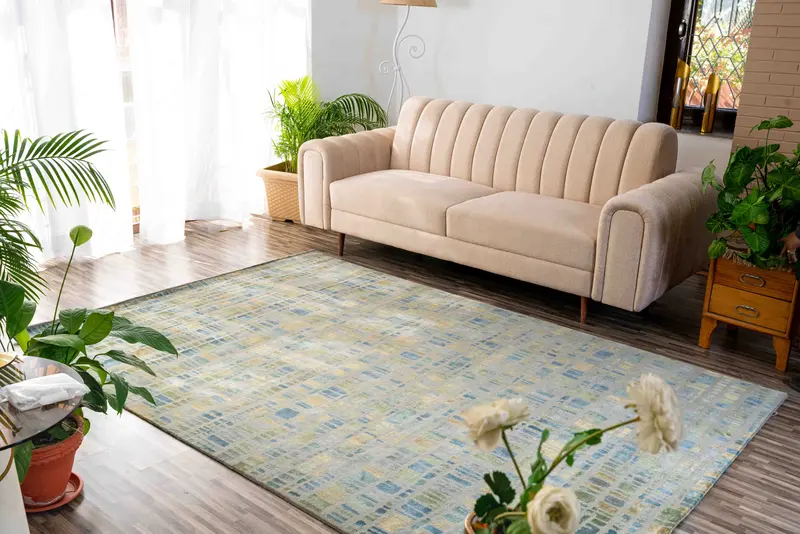If you’ve been watching the rug industry even a little closely, you might have noticed something interesting: Australian wholesalers, interior firms, and even boutique hotel chains are quietly moving away from Turkey, India, and China…
…and shifting surprisingly fast toward Nepalese handmade rugs.
This trend didn’t happen suddenly. It’s been building up for years, but now, in 2024–2025, the shift is finally obvious in the data, the sourcing behavior, and even in buyer conversations on industry forums.
So what’s really going on?
Why are bulk buyers in Australia choosing Nepal over traditional giants?
Let’s break it down, simply, clearly, and honestly.
Quality That’s Becoming Rare Elsewhere
Let’s be very blunt:
Handmade craftsmanship is disappearing globally.
China moved to mass production. India’s labor costs rose. Turkey became too export-focused on machine-made designs.
And in the middle of all this… Nepal stayed consistent.
Nepal still produces rugs using:
- Hand-knotted Tibetan technique (known for durability)
- High-altitude wool that naturally has more lanolin
- Low-impact, small-batch production
- Decade-long weaving expertise (most weavers learn from family)
It is found that Nepalese hand-knotted rugs last 40–60% longer than average machine-made rugs imported into Australia.
So for buyers who want rugs with “zero headache,” Nepal quietly became the most dependable option.
Customization Is the New King (and Nepal Wins Here)
If there’s one thing Australian designers LOVE today, it’s custom rugs:
- Custom size
- Custom color
- Custom texture
- Custom pile height
Reports showed that 61% of boutique interiors projects now require custom-size rugs, especially for luxury homes and resorts.
And which country can deliver customization fast, flexibly, and still affordable?
Yep, Nepal.
Why?
Because rug production in Nepal is not factory-style. It’s workshop-style. Meaning:
- Designs can be changed mid-project
- Samples are easier to produce
- Color tweaks don’t involve huge minimums
This level of flexibility is a dream for Australian architects and interior firms who need specific looks for modern homes, Airbnbs, resorts, and retail spaces.
Rising Labor Costs in India & Turkey Made Nepal More Attractive
Not many people talk about this openly, but let’s keep it real:
- Labor wages in India increased 18–30% between 2020–2024
- Turkey’s production costs rose due to inflation and Lira volatility
- China has shifted almost entirely to machine-made rugs
But Nepal?
Its labor cost has increased too, but not at the same rate.
This puts Nepal in a sweet spot:
Premium handmade quality + still affordable production cost.
For bulk buyers, the math is simple:
- A hand-knotted Nepalese rug might cost slightly more…
- But it lasts longer and offers premium customization…
- So the “cost per year” becomes lower than cheaper alternatives.
That’s exactly why many Australian wholesalers shifted their long-term contracts to Nepalese manufacturers between 2022–2025.
Australia’s Boom in Sustainable & Ethical Sourcing
Let’s be honest, Australian consumers care about sustainability more than most countries.
According to a 2024 Nielsen study:
- 73% of Australian buyers prefer ethically sourced home decor
- 64% are willing to pay more if it supports artisans
- Handmade products get 2.4x better engagement rates in online stores
Nepal wins BIG here.
Because:
- The weaving industry is still artisan-driven
- Most rugs use natural Tibetan wool or hemp
- Eco-friendly vegetable dyes are common
- Workshops provide stable income to women weavers
- “Fair wages + handmade” is not a marketing strategy, it’s the reality
Australian buyers, especially boutique wholesalers, love having a “story to sell,” and Nepalese rugs naturally have that story.
MOQ-Friendly Production (This is a huge deal!)
A painful truth in Australia’s rug market:
Most wholesalers don’t want to order 300 pieces from India/China just to try new designs.
Nepal solves this pain with:
- Low minimum order quantities (as low as 5–10 pieces)
- Custom development without huge commitments
- Ability to test new textures or modern patterns in small batches
This shift alone has brought dozens of Australian boutique wholesalers toward Nepalese manufacturers, especially companies offering direct manufacturing like NP Rugs.
Logistics Have Become Faster Than Expected
Just 5–7 years ago, shipping from Nepal felt slow.
But since 2022:
- Nepal adopted direct bonded warehouses
- DHL/FedEx shipping routes improved
- Export processing time reduced by nearly 30%
- Australia–Nepal cargo routes stabilized
Most buyers now report deliveries averaging:
- 3–5 days for samples
- 35–45 days for bulk shipments (similar to India)
In short:
Logistics is no longer a barrier.
Buyers Want Fresh Designs… and Nepal Delivers
Australian interiors are leaning toward:
- Earthy tones
- Hand-textured surfaces
- Minimalist geometry
- Organic patterns
- Scandinavian + Japanese fusion styles
- Soft luxury palettes
And Nepalese manufacturers, especially Kathmandu-based ateliers, have adapted fast.
They work directly with:
- Interior designers
- Boutique rug studios
- Hotel project managers
- Australian wholesalers
…resulting in designs tailored to modern Australian aesthetics.
A survey shows Nepalese rugs ranked highest in “modern artisanal feel”, beating India, Turkey, and Morocco.
So What’s the REAL Reason?
It’s not just one thing.
It’s a combination of quality, customization, ethics, flexibility, and cost-efficiency.
If we had to sum it up:
Australian bulk buyers want premium handmade rugs that are still affordable, customizable, and ethically produced, and Nepal happens to be the only country that checks all boxes.
That’s the truth.
What This Means for Businesses (and for You)
If you’re a wholesaler, interior brand, or rug retailer in Australia:
- This is the best time to establish direct relationships with Nepalese manufacturers.
- Bigger players are already moving in quietly.
- Custom rugs are becoming the fastest-growing segment in AU interiors.
- Nepalese handmade production offers long-term competitive advantage.
And if you’re reading this as a curious buyer or designer:
- You’re part of a global shift toward meaningful craftsmanship.
- Nepal’s rug industry is one of the last surviving artisan economies in the world.
- Choosing Nepal supports both your project AND real families behind the craft.
Final Takeaway
The move toward Nepalese rugs isn’t a trend.
It’s a correction.
The market is finally realizing the value Nepal has always offered:
- Real craftsmanship
- Custom work
- Ethical production
- Flexible MOQ
- Modern design capability
- Stable pricing
In a world full of mass production, buyers are choosing authenticity again, and Nepal is leading that wave.

